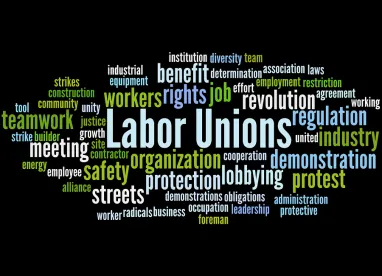When it comes to union organizing, Section 8(c) of the National Labor Relations Act (NLRA) vests employers with broad “free speech” rights to voice their opinions on unions to their workforces. The NLRA, however, also places limits on what employers can do if their employees express interest in forming a union.
Generally, companies cannot:
- threaten employees based on their union activity
- interrogate workers about their union activity, sentiments, etc.
- make promises to employees to induce them to forgo joining a union
- engage in surveillance (i.e., spying) on workers’ union organizing efforts
If an employer violates the NLRA by engaging in these acts, it can negatively affect union election results and result in other penalties.
One of the more nuanced, subtle violations occur when it comes to management surveillance of worker union activity. Aside from actual spying, many companies do not realize the NLRA also prohibits an employer from “creating the impression” it is surveilling employee unionizing efforts. For such a violation to occur, an employer need not actually spy (e.g., sit outside a union hall and monitor which of its employees attend a meeting). Rather, it is sufficient, for example, for a manager to make remarks to employees that would lead the workers to believe the employer is surveilling their activities (even if no spying in fact occurred). These claims are similar, in some respects, to “regarded as” claims under the Americans with Disabilities Act.
A recent case from the National Labor Relations Board (NLRB) demonstrates companies must tread carefully in this area. On Sept. 28, the board issued its decision in Napleton Cadillac, 367 NLRB No. 6 (2018). In its decision, the NLRB found various NLRA violations against the employer, including that it unlawfully created the impression it was spying on employees’ unionizing attempts. The board specifically found a violation occurred when a manager remarked to hourly employees that a specific employee was the lead union organizer. Hourly employees never spoke openly with management about their organizing activity, so they inferred that the only way the manager could know who was leading their effort was through spying. In other words, that remark by the manager impermissibly created the impression of surveillance.
This case serves as another important reminder that there are very specific rules employers must abide by when union activity surfaces in the workplace, and there can be harsh consequences for companies that misstep in this area when trying to remain union-free. Employers can voice their stances on unions to their employees, but efforts should be taken to ensure all communications conform to applicable requirements under the NLRA.




 />i
/>i
